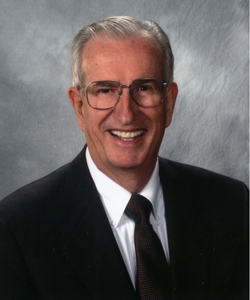William Menzies’ lecture on the Christian and Missionary Alliance, reviewed by Paul King
 William W. Menzies, “Non-Wesleyan Pentecostalism: A Tradition: The Christian and Missionary Alliance and The Assemblies of God,” Asian Journal of Pentecostal Studies 14:2 (July 2011), pages 226-238.
William W. Menzies, “Non-Wesleyan Pentecostalism: A Tradition: The Christian and Missionary Alliance and The Assemblies of God,” Asian Journal of Pentecostal Studies 14:2 (July 2011), pages 226-238.
In his lectures on non-Wesleyan Pentecostalism, presented at the Asia Pacific Theological Seminary in 2000, William W. Menzies ably surveyed the impact of non-Wesleyan traditions upon Pentecostalism, and especially the Assemblies of God. These included Finished Work, Fundamentalism, Keswick, and The Christian and Missionary Alliance. This article focuses on reviewing Menzies’ lecture on “Non-Wesleyan Pentecostalism: A Tradition: The Christian and Missionary Alliance.” In a later article I will review the other three lectures.
In this lecture, Menzies discusses the non-Wesleyan influence of A.B. Simpson and the Christian and Missionary Alliance (C&MA) upon Pentecostalism, declaring accurately that “More than any other single institution, the Christian and Missionary Alliance denomination profoundly impacted the shaping of the Assemblies of God. … Much of the theology, as well as the polity, of the Assemblies of God, was borrowed directly” from the C&MA (p 226, 227). Although many confuse the C&MA with the Wesleyan holiness movement, Menzies correctly identifies the C&MA as a “higher life” movement.[1] Since I am an ordained minister with the Christian and Missionary Alliance who has prayed in tongues for more than 40 years, I was especially interested in Menzies’ portrayal of Simpson and the C&MA. I found him generally accurate, but with some important misunderstandings. Menzies used primary sources, including Simpson’s Fourfold Gospel and Wholly Sanctified, standard texts for C&MA ministers. He also referenced research and interviews with C&MA historian John Sawin.
Menzies describes the spiritual journey of A. B. Simpson, including his experiences of healing a a sanctifying baptism in the Spirit, as well as his later relationships with Pentecostalism. He mistakenly conflates Simpson’s experience of his sanctifying baptism in the Spirit with his experience of divine healing in 1881. In actuality, Simpson’s sanctifying Spirit baptism occurred in 1874. He accurately describes Simpson’s “Fourfold Gospel” of Jesus Christ as Savior, Sanctifier, Healer, and Coming King , which he stated is borrowed from A.J. Gordon (p. 231). However, he does not give a source for this claim, and in my 20 years of research, I have never seen anything in C&MA writings or Gordon’s writings to support this claim. Rather, George Muller acknowledges Simpson’s originality in the concept, telling Simpson that “his arrangement of truth was most evidently ‘of the Lord’ and suggested that he never change its mold.”
Menzies notes similarities between the C&MA and Keswick views of sanctification, claiming that Simpson “advocated a theology of sanctification that fits into the Keswick pattern rather than the classical Wesleyan Holiness theology. … the alliance view was certainly interchangeable with the Keswick teaching” (p. 233). It is true that Simpson’s view was much closer to Keswick than to Wesleyan; however, it is not accurate to say that Simpson’s view “fits” into the Keswick pattern. A.B. Simpson, for instance, spoke at a Keswick convention (1890), especially opposing the language of suppression held by some in the Keswick camp and he did not use the language of counteraction held by other Keswick leaders.
Simpson’s view, though similar to Keswick, was distinct, calling sanctification “the law of lift.” Christ in you, the hope of glory, lifts the believer above the old nature. He called the baptism in the Spirit “God’s elevator to the higher life.” He viewed it as a sanctifying experience, not in the same way as Wesleyans or Keswick proponents, but as an intensification of the sanctification begun at conversion, or as Richard Lovelace expresses it, “a large leap forward in progressive sanctification.” Menzies’ lack of full understanding of Simpson’s view of sanctification may be due to his referencing only the earlier works of Simpson, not Simpson’s later writings which explain his views more fully and maturely. Menzies also does not seem to be aware of nuances in differences between the Higher Life and Keswick movements.
Category: Church History, Winter 2014


